The wishbones of the front suspension are the most critical and most heavily loaded parts of the bike. The wishbones connect the front fork with the chassis and they also acommodate the front shock.
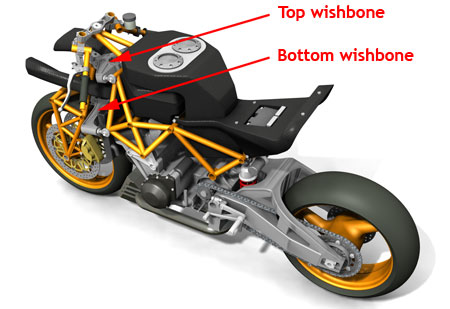
Both parts are clamped to the chassis through 2 rod-ends that allow to modify their lenght, making possible to adjust the front end geometry. The lower wishbone is the one more loaded, mainly during braking. It’s shape is far from optimal in order to achieve a good load distribution, because it is wide and short, but I chose this option because it allows to achieve more room for the radiator that is “surrounded” by the wishbone.
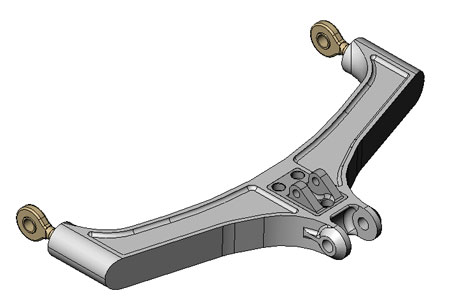
Anyway the width of this area of the bike is dictated by the engine, so it didn’t have too much sense to try to design a narrower wishbone. This is the top one:
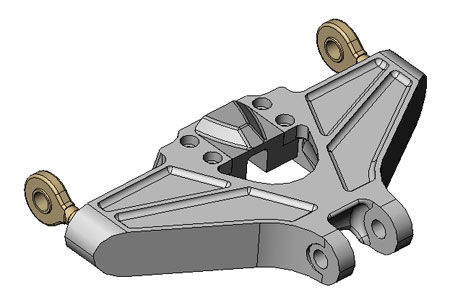
Taking into account the responsability of these parts, I made a quite conservative design, keeping good safety coefficients. It always will be possible to try a more efficient design in the future. Even so I studied 10 different options because I wanted to try to get the best possible design inside of the intended safety coefficient. Finite Element Analysis (FEA) is a great tool that helps to resolve this kind of questions.
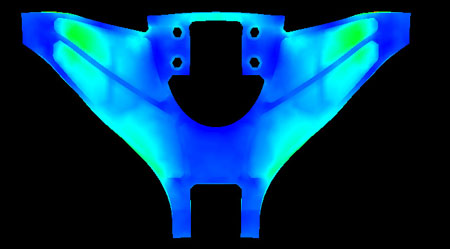
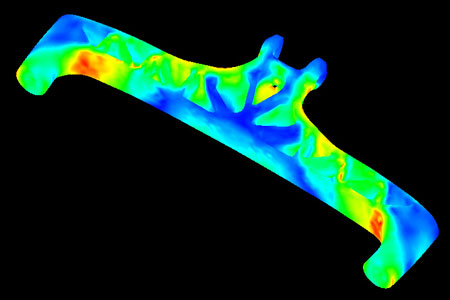
I considered to build the parts using welded steel tube, welded aluminium sheetmetal, finally I chose aluminium CNC milled parts, in this way it is not necessary to weld, or to build any jig. Moreover it is a cool option from an aesthetics point of view, Hugo van Waaijen gave me some ideas to improve the parts in this aspect.
Once we have the final design of the parts, we can export the geometry to a file, send it by email to our provider, and in just a few hours we can get the final parts, ready to assembly on the bike.
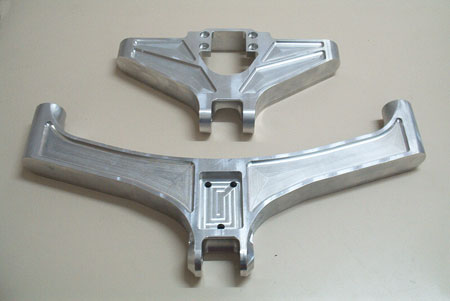
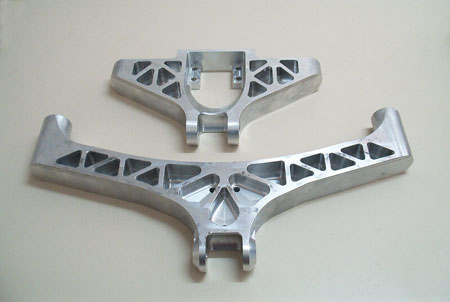
English is not my native language, so please let me know if you find any mistake. Thank you.
[tags]morlaco, design, finite elements, FEA, aluminium, cnc[/tags]
Hi David,
Nice wishbone setup!
How did you determine the length of the wishbones? The lower is longer than the upper one.
Regards,
Jeroen.
Hi Jeroen. Thank you for your comment.
The length of the wishbones has a lot of implications. With their length you can decide the path of the front wheel as the suspension moves up and down, and you also determine the antidive effect when you brake. It is necessary to determine the instantaneous rotation center of the front end and its relative position with respect to the center of gravity of the bike + rider.